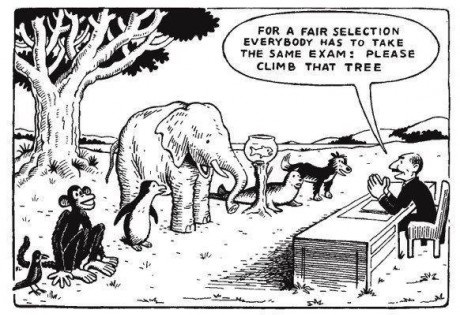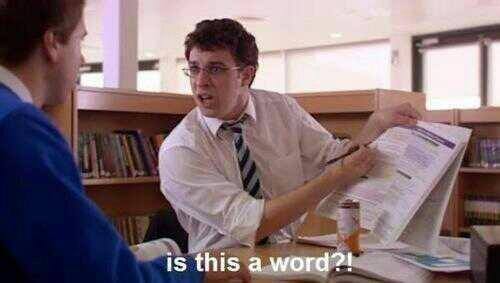In the coming four weeks, I will focus my topic to conduct an in-depth research on how to better educate Chinese citizens. In my context, I am from Hong Kong, a city of China; therefore I should understand the Chinese culture right? Here is the issue, Hong Kong was once dominated by Great Britain for 99 years, which meant most of our system is based on Great Britain, and this diverse multi-culture has a unique impact on my belief and experience. There are substantial differences in thinking between Hong Kong and Mainland China people, and I crave to know the fundamental reasons as part of my research.
The final purpose of education is to lead people to life success and happiness, and acquiring a higher education would allow them to have a freedom of thinking critically and creatively. However, before educating citizens to a higher education level, it is critical to understand the dynamics of the community and their social problems, and solve the root of those problems. A serious need of reducing economic inequality and corruption has been observed in China for decades; however, it requires the identification of determinants to these issues in order to generate solutions.
Corruption: The Collapse of Community and the Underlying Theories
Corruption arouses a serious social concern in China, and mostly because their distribution of social goods are made under political considerations and processes (Yolles, 2009). Therefore, its influence is evidential in many aspects of life, from environment, economic growth, and health care to education. According to Pie (2007), the estimated amount of Chinese government capital being misused on corruption was $86 Billion, and it exceeded the entire expenditure on education in 2006 in China. Furthermore, corruption extends to their education sector, that the statistical figures reported and quality of research conducted by the highly esteemed university in China was falsified with a high rate of plagiarism; this trend suggests that corruption is also underlying in the academic departments (Jiaxue, 2010).
In a theoretical perspective of corruption, the causes can be explained by using three levels of corruption depth: individual, organizational and societal levels (Graaf, 2007). Firstly, public choice theory is applicable to the level of the individual, that it attributes individuals to corruption because the estimation of one’s own benefits outweighs the costs. A following suggestion is to influence the calculations between cost and benefit, and gives the corruptive individuals an illusion of growing costs by increasing the penalty of getting caught (Anechiarico & Jacobs, 1996). Secondly, organisational culture theory shows that “a certain group culture leads to a certain mental state”. This theory suggests that influencing the culture of an organization is crucial in order to control corruption. An example of this would be changing the leadership (Kaptein & Wempe, 2002); when the top management of an organization is corruptive, it increases the risks to generate more corruption activities by individuals who have business contact with the organization. Lastly, ethos of public administration theory is believed to be responsible for the societal level. This theory proposes the source of corruption is based on certain norms and values of societies which have a direct impact on the norms and values of citizens. The solution to this corruption is ethical education and involves amendments on the codes of conduct (Kaptein & Wempe, 2002).
Conformity provides a social psychological insight to explain why corruption is hard to change, in which government plays a key role. An example took place in Hong Kong that the Chinese government attempted to enact “Hong Kong Basic Law Article 23” that arouses our concern of restricted speech freedom in 2002. The fear of being illegal to express our thinking on the political decision can make citizens conform to the government; and when corruption is conducted by officials, how should we act?
Solution to Reduce Corruption: Anti-Corruption Education and a Future View
A generally held belief on the solution of corruption is that development of education and literacy rate would lead to less corruption, that is shown in a study of the U.S., where the negative relationship between education and corruption was reported (Glaeser & Saks, 2006). However, Dong and Torgler (2010) indicated that in China, education is positively associated with corruption, and this implied that educating individuals to have an abundant knowledge of the world would only lead to corruption. If this is a genuine truth, a re-investigation of their current education system must take place to understand where it takes roots. It is possible for parents, teachers and teaching curriculum to lead the education road to a wrong trajectory. An example of this would be a missing element in the traditional teaching content (i.e. moral education), or an inappropriate teaching content that reduces citizens’ sense of what damage corruption would do to themselves and their community.
It was in 2007 that the very first time Chinese government aroused their sense of anti-corruption, and promoted an anti-corruption game “Incorruptible Fighter” from a governmental game designer, aiming to highlight its problems and increase awareness of adolescents and young adults on this issue (BBC, 2007). The media massively criticized the moral rights of the game for “killing for justice” before it could successfully educate them about anti-corruption. Another issue with this game was its untimely launch date, as this game would be futile until the government officials are educated on anti-corruption. Launching a game would be a good method to educate the new generations about anti-corruption and moral education if the game is well-designed.
The new president of China, Xi Jinping, recently launched an anti-corruption campaign (BBC, 2013), and committed to increase the trade transparency and change the law restriction (The Guardian, 2013). The commitment from Xi provides new hope of reformation to the Chinese citizens. However, the most easily associated problem of this anti-corruption campaign is that how can we guarantee that its supervisor is unbiased?
The body of research on the causes of corruption is growing vastly; nevertheless there are no absolute solutions applicable to all context of corruption, because theories generally have different focuses (i.e. levels of corruption, and implicit or explicit causal models). More genuinely, the mix of corruption control changes over time that any suggestions on solving corruption at a time may no longer be effective in a five years’ time (Anechiarico & Jacobs, 1996).
Economic Inequality: The Source of Education Inequality
It is not wrong by saying that every dot is connected, and a butterfly effect exists between factors. Whilst corruption causes economic inequality in urban and rural areas, economic inequality leads to education inequality (You, 2005; Zhou & Qin, 2012). In the recent empirical research, there is a controversy on whether economic inequality has a causal relationship with education inequality, or an interaction with education equality.
Yue and Liu (2007) argued that lower income inequality provides greater educational opportunities to citizens, and therefore reduce the education inequality in the urban cities of China. They demonstrated that the growing distribution of income inequality was attributed to the groups with lower socio-economic status, whereby those individuals are more likely to have lower education level and less work experiences averagely in comparison with other groups. Additionally, the gap of income within a group is considerable smaller when they have a higher average education, and it implied that the improvement of general education in urban cities will bring better economic equality; but have we underestimated the complexity of this issue?
Yang, Huang and Li (2009) conducted a similar research as Yue and Liu’s, but their investigation extended from urban people to rural people in China. They also consistently reported that reducing income inequality will lead to a significant decrease in education inequality. Fundamentally however, they found that the improvement of educational inequality does not reduce the economic inequality in short-term, as well as long-term from their prediction. This finding can be explained by the current economic condition in Chinese labor force market, that the supply is more than the demand which leads to a worse income inequality than before. It is obvious that an emergent need to increasing the job opportunities can solve the immediate problem caused by income inequality. Despite this, the finding also has another serious implication: since an education could not help in getting a better job, will people start thinking that education has no future? This leads to a lack of motivation of understanding new information and a more discordant atmosphere in the society.
Who wants to live under poverty? If people achieve a higher education, but they end up being worried about living and a load of stress; there is no way for them to gain happiness in their life. Tell me, how can they indulge themselves in the world of knowledge?
Brief suggestions are that Chinese government should put more effort to the unbalanced economic development, whilst considering educational investment and economic policy; in order to reduce the economic inequality among provinces.
References:
- Anechiarico, F., & Jacobs J. (1996). The Pursuit of Absolute Integrity. How Corruption Control Makes Government Ineffective, The University of Chicago Press: Chicago.
- BBC, (2007). China Enjoys Anti-Corruption Game. Retrieved from: http://news.bbc.co.uk/1/hi/6928279.stm
- BBC, (2013). How Real is China’s Anti-corruption Campaign?. Retrieved from: http://www.bbc.co.uk/news/world-asia-china-23945616
- Jiaxue, G. (2010). Academic Corruption Undermining Higher Education: Yau Shing-Tung. Retrieved from: http://www.chinadaily.com.cn/hkedition/2010-06/02/content_9919871.htm
- Dong, B. & Torgler, B. (2010). The Causes of Corruption: Evidences from China. Fondazione Eni Enrico Mattei Working Paper, 461, 1-36. Retrieved from: http://www.crema-research.ch/papers/2010-07.pdf
- Glaeser, E. L., & Saks, R. E. (2006). Corruption in America. Journal of Public Economics, 90, 1053-1072.
- Graaf, G. (2007). Causes of Corruption: Towards a Contextual Theory of Corruption. Public Administration Quarterly, 31, 1-39. Retrieved from: http://unpan1.un.org/intradoc/groups/public/documents/un-dpadm/unpan049603.pdf
- Kaptein, M., & Wempe, J. (2002). The Balanced Company: A Theory of Corporate Integrity. Oxford: Oxford University Press.
- Pei, M. (2007). Corruption Threatens China’s Future. Retrieved from: http://carnegieendowment.org/files/pb55_pei_china_corruption_final.pdf
- The Guardian, (2013). China anti-corruption crackdown targets Nanjing mayor. Retrieved from: http://www.theguardian.com/world/2013/oct/17/china-corruption-crackdown-nanjing-mayor
- Yang, J., Huang, X. & Li, X., (2009). Educational inequality and income inequality: An empirical study on China. Frontiers of Education in China, 4(3), 413-434.
- Yolles, M. (2009). A social psychological basis of corruption and sociopathology. Journal of Organisational Change, 22(6), 691-731.
- You, J.-S. (2005a), “A comparative case study of corruption in South Korea, relative to Taiwan and the Philippines: focusing on the role of land reform and industrial policy”, PhD thesis, JOCM22,6730 Harvard University, Cambridge, MA, Chapter IV, available at: ksghome.harvard.edu/youjong/Ch%204%20Corruption%20in%20Korea.doc
- Yue, C. & Liu, Y. (2007). Impact of education on the income of different social groups. Frontiers of Education in China, 2(2), 191-200.




You must be logged in to post a comment.